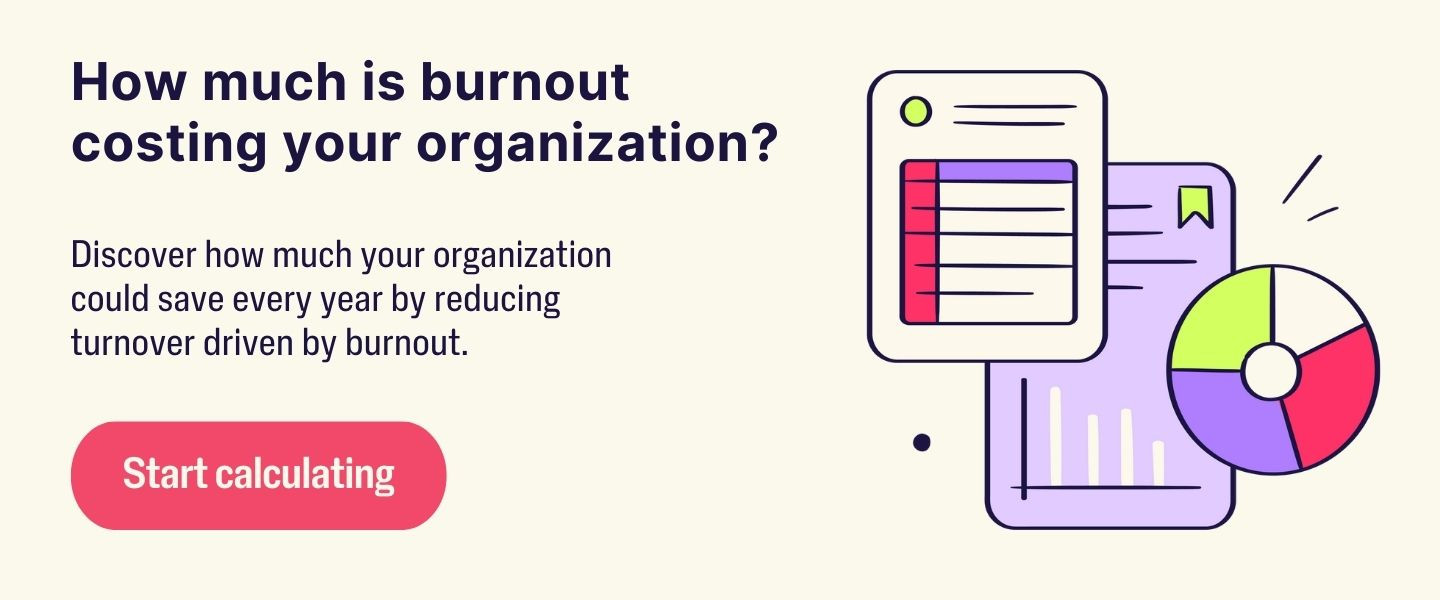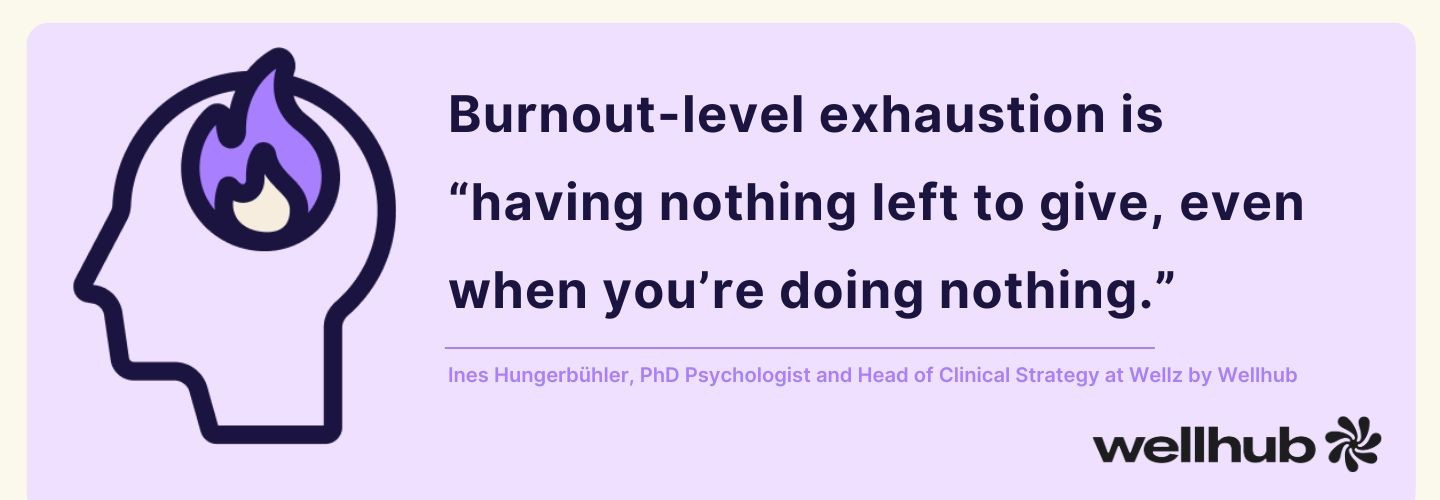Corporate Wellness in NYC: How Companies Are Combating Employee Burnout and Boosting Productivity
Last Updated Oct 31, 2025

Burnout turnover is draining billions of dollars from just three of New York City’s biggest industries every single year.
That’s not a typo. It’s a wake-up call. From clinicians in crowded hospitals to finance pros glued to late-night emails, workers across the five boroughs are hitting a breaking point. The city’s nonstop pace, steep living costs, and around-the-clock expectations are creating a perfect storm of stress and exhaustion.
But here’s what most leaders miss: burnout isn’t just a personal struggle — it’s a business liability. And it’s one you can change.
This isn’t another generic wellness pitch. You’ll get hard numbers, NYC-specific data, and proven strategies that top companies are using right now to lower burnout and boost retention. Whether you lead a team of 20 or 2,000, the right moves can transform burnout from a runaway cost into a competitive advantage.

The State of Burnout in New York City
Burnout is everywhere: 90% of employees say they’ve experienced burnout symptoms in the past year. A full 39% experience burnout symptoms at least weekly, and 18% feel burnout symptoms every day, according to Wellhub'sState of Work-Life Wellness 2026 report.
NYC is no exception. The city’s pace, cost of living, and high-pressure industries have created a workforce stretched to its limits.
Recent data from the New York City Department of Health and Mental Hygiene show that nearly one in four adults in New York City experience a mental health disorder each year, a figure that captures the deep connection between urban living and chronic stress. Among adults with lower incomes, the rate of serious psychological distress is significantly higher — driven by economic strain, discrimination, and limited access to care.
The effects are being felt across every sector. In healthcare, a study from the Center for Health Workforce Studies at SUNY Albany found that 30% of New York State clinicians — most of them in the NYC region — reported newly acquired burnout during the pandemic, with urban providers facing the greatest stress. Among small independent practices in New York City, 13.5% of physicians reported burnout — still a striking number given the city’s already high clinical demands.
For public-sector workers, the pattern is similar. In a survey conducted by the NYC Office of Labor Relations, six in ten city employees said they felt burned out, citing workload and resource strain as major factors.
These are more than numbers — they represent the people who power the city’s hospitals, offices, classrooms, and restaurants. And their wellbeing isn't getting any better on its own: Over half of full-time workers say their stress levels increased over the past year, with 19% saying they've experienced a significant spike.
Fortunately, awareness is rising. This creates an opportunity. For employers, tackling burnout is investment in the long-term health and productivity of their workforce.
What Burnout Costs NYC Companies
Burnout is costing New York City employers far more than missed workdays — it’s silently draining productivity, driving turnover, and eroding profitability. Research from the CUNY Graduate School of Public Health & Health Policy estimates that employee burnout costs companies between $4,000 and $21,000 per worker each year, depending on job level. For a mid-size employer with 1,000 workers, that’s an average annual loss of $5 million in productivity and replacement costs alone.
When applied to the city’s largest industries, these losses add up fast. Because wages, turnover costs, and workloads are higher in NYC, the real economic toll is likely above national averages.
Estimated Annual Cost of Employee Burnout in New York City
(Modeled using U.S. per-employee cost ranges from the CUNY study, adjusted for NYC employment levels and cost structure.)
| Industry | Employees | Estimated Replacement Cost per Employee (USD) | Modeled Annual Loss (USD) |
|---|---|---|---|
| Finance | 330,000 | $10,000 | $3.3 billion |
| Healthcare | 850,000 | $12,000 | $10.2 billion |
| Leisure & Hospitality | 380,000 | $4,000 | $1.52 billion |
| Total Estimated Annual Cost | — | — | ≈ $15 billion per year |
Even under these modest assumptions, burnout is be costing over $1 billion annually across just these three sectors. That doesn’t account for other major industries like tech, media, or education, where stress and turnover are also high.
The financial ripple extends beyond payroll. Each burned-out employee affects client service, innovation, and morale. Turnover can cost up to 200% of an employee’s salary, according to SHRM — that adds up fast in NYC salary bands. Productivity loss from disengaged staff compounds that figure.
Investing in prevention — through mental health benefits, workload redesign, and flexible scheduling — offers measurable payback. According to Wellhub’s Return on Wellbeing 2025: The CEO Edition, 82% of CEOs see positive financial returns from wellbeing programs.
What’s Fueling Burnout in NYC Workplaces
The pressures driving burnout in New York City are as relentless as the city itself. Across industries, employees are navigating high demands, financial strain, and limited access to meaningful recovery.
Heavy workloads and chronic understaffing: Many NYC workers are simply doing too much with too little support. In one city workforce survey from the Office of Labor Relations, six in ten public-sector employees reported feeling burned out — a clear signal of resource strain. Healthcare and service workers face similar pressures: staffing shortages, long hours, and high demands leave little room to rest. Among restaurant employees, three in four work more than 10 hours a day, and 60% report working while sick, underscoring how financial necessity and job insecurity push people to keep going even when exhausted. These challenges are magnified by the city’s high cost of living, which leaves many workers unable to scale back their hours or take unpaid time off.
Gaps in mental health access and support: Even when employees recognize they’re struggling, help isn’t always easy to find. The NYC Department of Health reports that nearly one in four adults experience a mental health disorder each year, yet barriers like cost, appointment shortages, and stigma persist. In Wellhub’s State of Work-Life Wellness 2025 report, 36% of employees cited therapy costs as the main reason they don’t seek care, while 21% said they postponed care entirely. In a city where financial and time constraints run high, these gaps make recovery harder and stress more chronic.

Poor leadership and lack of control: Research from SHRM shows that 47% of employees cite heavy workloads and 40% point to poor leadership as top drivers of burnout. The dynamic is evident in NYC, where many workers feel like they have limited autonomy and lack recognition. In sectors like finance and tech, long hours and constant connectivity are normalized, leaving employees feeling both overworked and undervalued.
A culture of constant connectivity: In the city that never sleeps, disconnecting has become nearly impossible. From Wall Street analysts to startup teams, many workers describe the expectation of being “always on.” After-hours emails, late-night client demands, and the pressure to perform around the clock prevent the mental detachment needed for true recovery — a known predictor of burnout, according to the American Heart Association.
Together, these forces create a feedback loop of exhaustion. Employees are stretched thin by workload and living costs, left without accessible mental health care, and trapped in systems that reward overextension. For HR leaders, addressing burnout in NYC means tackling it on both fronts: improving structural support inside the workplace, and helping employees access the care and time they need outside of it.
How Harnessing Corporate Wellness in NYC Can Reverse the Trend
The forces behind burnout in New York City are complex, but the solutions are clear. When organizations make wellbeing a business priority, both people and performance rise together.
Data from Wellhub’s Return on Wellbeing 2025: The CEO Edition shows that 82% of CEOs report a positive ROI from their wellness programs, and nearly eight in ten say those programs deliver returns greater than 50% — in some cases, as much as double their investment. That impact extends beyond the balance sheet: 99% of HR leaders say wellbeing initiatives increase productivity, and 98% say they reduce turnover.
Wellhub research underscores how access to wellbeing programs reshapes the employee experience. Workers with Wellhub are more likely to report improved mental (75% vs. 43%) and overall wellbeing (77% vs. 59%). They also sleep better, eat healthier, and are twice as likely to say they feel energized at work.
For companies in New York City’s fast-paced markets, these outcomes aren’t fringe perks — they’re critical performance drivers. A wellbeing strategy that addresses financial stress, time scarcity, and mental load doesn’t just prevent burnout; it builds a foundation for sustained growth and resilience.
Forward-looking leaders are recognizing this: 58% of CEOs strongly agree that wellbeing is critical to their organization’s financial success. In a city that never stops moving, the employers who invest in wellness are the ones best positioned to help their people — and their businesses — thrive.
Help Workers Keep Up With the City That Never Sleeps
New York City workers face nonstop pressure, long hours, and limited time to recover. Many juggle burnout, financial stress, and a lack of access to mental health support — all while trying to keep up with one of the world’s fastest-paced cities.
An employee wellbeing program gives teams what they’re missing: tools to manage stress, improve mental health, and build healthier routines. With the right support, employees can rest, recover, and stay engaged. According to Wellhub’s Return on Wellbeing 2025, 75% of employees with wellness benefits report better mental health — and companies see the results. A majority of CEOs say their programs deliver over 50% ROI, often through stronger retention and higher productivity.
Speak with a Wellhub Wellbeing Specialist to reduce burnout and boost performance across your workforce.

Company healthcare costs drop by up to 35% with Wellhub*
See how we can help you reduce your healthcare spending.
Category
Share

The Wellhub Editorial Team empowers HR leaders to support worker wellbeing. Our original research, trend analyses, and helpful how-tos provide the tools they need to improve workforce wellness in today's fast-shifting professional landscape.
Subscribe
Our weekly newsletter is your source of education and inspiration to help you create a corporate wellness program that actually matters.
Subscribe
Our weekly newsletter is your source of education and inspiration to help you create a corporate wellness program that actually matters.
You May Also Like

Wellness Points Programs: Boost Employee Health & Engagement | Wellhub
Turn your workplace wellness strategy around with a points program that rewards healthy behavior with perks, from extra time off to gift cards.

Employee Financial Wellness Programs: Ultimate HR Guide | Wellhub
Create an effective financial wellness program that supports your employees in their financial needs, boosting productivity and retention.

6 Ways to Mental Health Support at Work | Wellhub
Transform your workplace with effective mental health support strategies to reduce stress, prevent burnout, and create a thriving company culture.